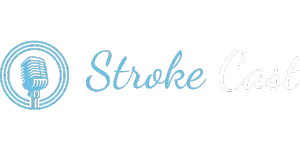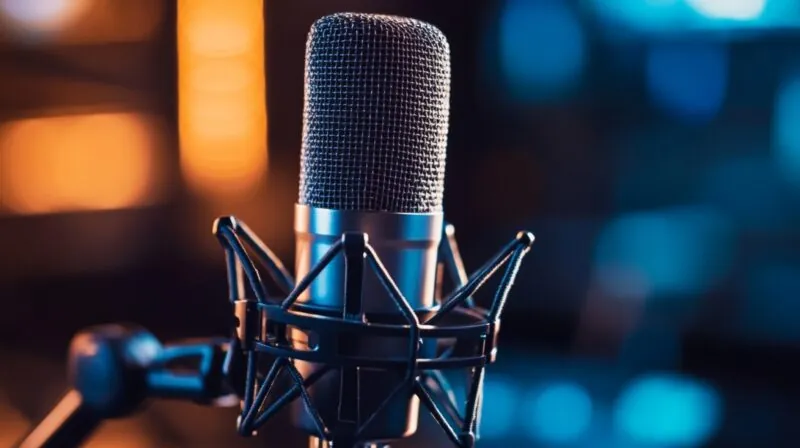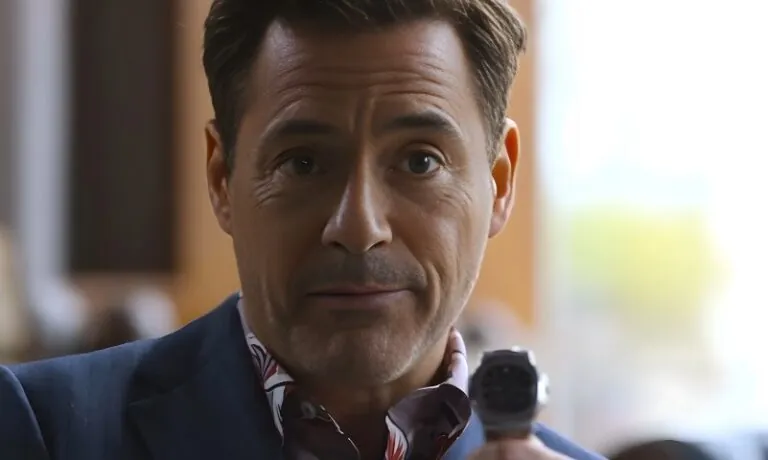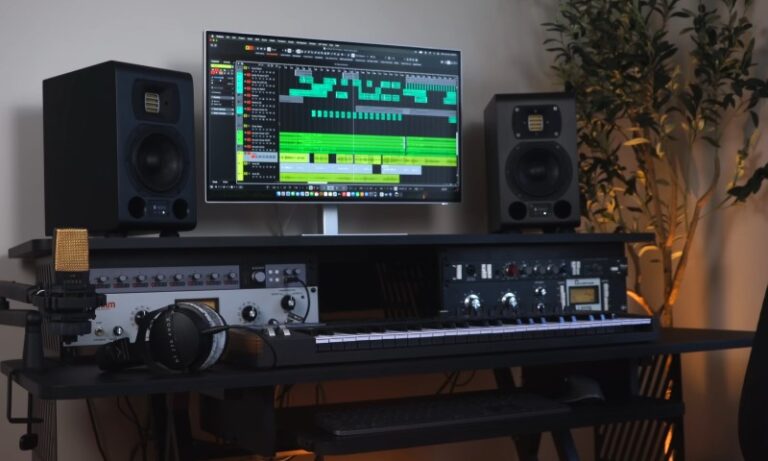Editing separates a forgettable podcast from one listeners’ binge. Raw recordings, no matter how well-spoken, rarely deliver the clean and professional feel audiences expect.
Editing enhances pacing, removes distractions, and emphasizes message clarity.
- Cuts
- Refined sound
- Structured flow
Now, we will walk you through prep work, editing stages, and the most effective software to help shape every episode into a show worth subscribing to.
Pre-Editing Preparation
Every polished podcast starts long before hitting record. Great editing can only enhance what already works at the source.
Without clear structure, clean audio, and basic planning, no amount of post-production can fix cluttered, low-quality recordings.
Solid preparation minimizes time spent cutting and correcting and maximizes the flow and clarity of each episode. Two major areas deserve special attention: strategic planning and a proper recording environment.
Key points under each area are outlined below for quick reference and implementation.

Plan Ahead
Thinking ahead gives editors room to work with clean structure rather than chaos. Every podcast benefits from a defined framework.
- Decide if the episode will follow timed segments, a casual back-and-forth, or a mix.
- Aim for a duration that holds attention but delivers value without dragging.
- Choose between full scripting, a bullet-point outline, or unscripted conversation, depending on your strengths.
- Use timestamps or shorthand notes to flag standout quotes, mistakes, or places needing edits.
- Let them know what to expect, especially if structure or timing matters.
Real-time awareness during recording reduces the need for excessive post-editing. You’re not just capturing sound, you’re setting up a cleaner canvas for production.
Choose the Right Recording Environment
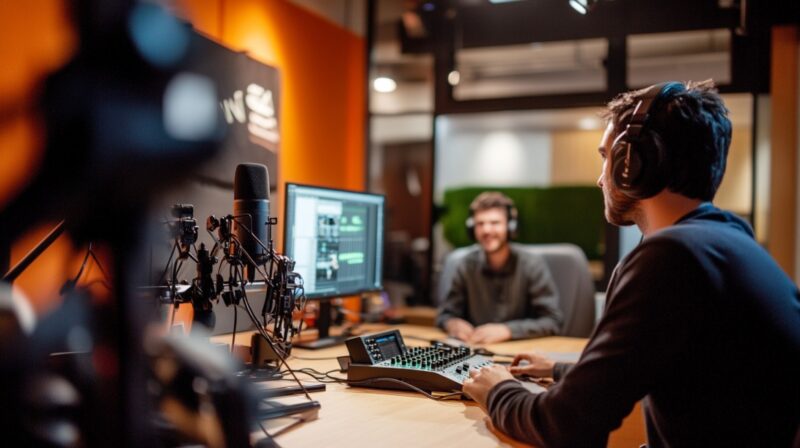
Clean audio starts in the room, not in software. Fixing bad sound after recording is difficult, often impossible, without sacrificing quality.
Controlling the recording space pays off immediately when editing begins.
- Position the mic properly: Keep it about 6 inches from the speaker’s mouth, slightly off to the side to reduce plosives.
- Soundproof basic elements: Use blankets, rugs, curtains, or foam panels to absorb sound reflections.
- Minimize ambient noise:
- Turn off fans or A/C units
- Silence phones and electronics
- Close windows and doors
- Use pop filters or windshields: These small tools cut out harsh breath sounds and soft pops from speech.
The effort spent on preparation makes every edit easier and helps deliver a professional, consistent result.
Starting with clean audio also lets you focus more on pacing, story flow, and polish rather than fixing flaws that could’ve been avoided.
The Podcast Editing Process – Step-by-Step
Turning a raw recording into a polished podcast requires precision and planning.
- Clarity
- Structure
- Listener satisfaction
Start with basic audio cleanup, move through sound design, and finish with mixing and mastering.
Those producing video podcasts can take it further with visual edits.
Stage 1: Basic Audio Editing
Editing begins by refining the raw audio into a polished foundation. At this stage, the focus is placed on cleaning up the material, removing distractions, correcting levels, and setting the groundwork for story flow and design.
Efficient editing requires structure, clarity, and attention to subtle imperfections that can throw off an entire listening experience.
Import & Organize Your Audio Tracks
Start with organization. Structure matters more than it seems. Keeping everything in order before editing improves workflow and prevents mistakes during mixing.
- Host track(s)
- Guest track(s)
- Music tracks (intro, outro, background)
- Ambient sound or room tone
- Sound effects
Proper grouping allows targeted edits. Want to raise your guest’s mic without touching the host? Easy. Need to drop music volume under speech? No problem if tracks are organized.
Remove Background Noise
Clean audio creates trust. Listeners don’t want to hear a buzzing fridge or distant barking dog. Noise removal tools are essential, especially when recording conditions aren’t ideal.
- Studio Sound – AI-enhanced cleanup for dialogue
- Magic Audio – Automatic noise and echo reduction
- Audacity’s Noise Reduction – Manual control over noise profiles
Apply sparingly. Removing too much can degrade voice quality or produce a “watery” sound. Less is often more.
Cut Filler Words, Mistakes, and Awkward Pauses
Long-winded pauses and repeated “ums” cause listeners to zone out. Prune with care. Natural speech includes imperfections, don’t scrub away all personality.
- Remove repeated or stumbled phrases
- Trim overly long silences
- Cut filler words like “uh,” “um,” “you know,” and “like”
Aim to retain conversational flow. Podcasts shouldn’t sound like a machine wrote them.
Create a Cohesive Story Flow
Once audio is clean, it’s time to shape the structure. Conversations often include tangents or sections that drag. Rearranging segments can improve pacing and boost engagement.
- Remove off-topic sections
- Shift impactful moments earlier
- Highlight turning points or shifts in tone
- Group related ideas closer together
Each episode should feel like it’s going somewhere, even if it’s unscripted.
Volume Leveling & Compression
Volume jumps make listeners reach for the volume knob. Compression fixes those jumps and smoothens the overall sound.
Each speaker’s voice should feel balanced, no matter their natural tone or mic technique.
- Use compression to reduce dynamic range
- Apply EQ to boost clarity (cut muddiness, enhance brightness)
- Normalize volume across all tracks to match podcast standards (around -16 LUFS for stereo)
Consistent audio is a non-negotiable feature of professional-sounding podcasts.
Stage 2: Sound Design
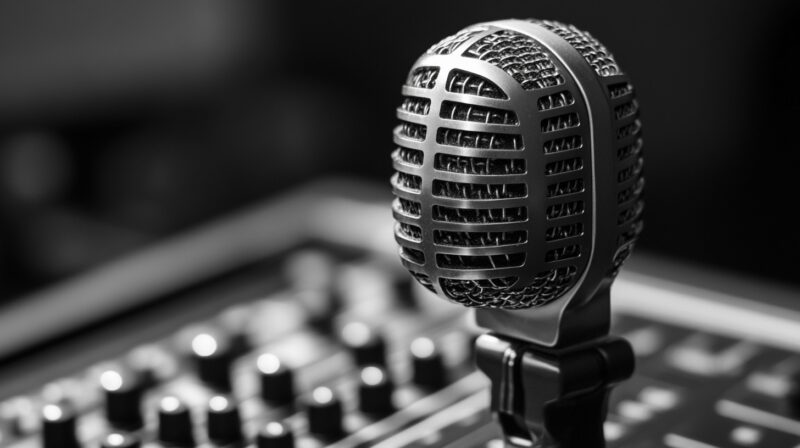
Once the basics are set, elevate the listening experience through sound design.
Music, effects, and branding elements give a podcast personality. Subtle design choices create a mood and help with pacing, guiding the listener through tone changes and transitions.
Add Intro/Outro Music & Branding Elements
Opening and closing music serve as auditory bookends. Consistent use helps establish identity, tone, and listener expectations. Repetition builds recognition.
- Branded intro jingle or music
- Show name and quick intro voiceover
- Outro music with call-to-action (CTA) or closing statement
- Audio stingers or bumpers between segments
Pick music that matches the vibe. An upbeat comedy podcast won’t benefit from slow, cinematic strings.
Layer Background Music and Sound Effects
Background music and effects should enhance, not compete with, dialogue.
Use them to lift energy or signal transitions. When applied correctly, these additions make content feel complete.
- Light music under intros or summaries
- Transition cues between segments
- Sound effects for comedic or dramatic effect
- Ambient background (e.g., coffee shop sounds) for immersion
Avoid overuse. Anything that distracts from speech should be dialed down or removed.
Stage 3: Mixing & Mastering
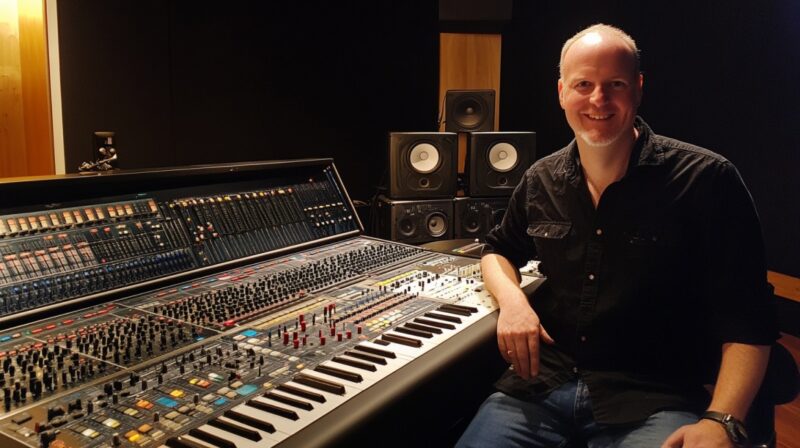
Mixing and mastering finalize the podcast. At this point, everything is shaped and in place; now it’s about balance and polish.
Proper finishing makes playback pleasant on any device, from high-end headphones to old car stereos.
Mix Multiple Audio Tracks
Balance is everything. Each voice should sit comfortably in the mix. Music should never overpower speech, and sound effects should blend in naturally.
- Use panning to separate speakers in stereo
- Apply EQ to reduce clashing frequencies
- Ensure crossfades and transitions are smooth
- Mute unnecessary sections to eliminate overlap
Spend extra time here. A good mix holds attention without drawing it.
Apply Mastering Effects
Mastering gives your final mix a commercial polish. It ensures consistent loudness, prevents peaking, and prepares audio for distribution platforms.
- Limiters to cap volume spikes
- Loudness normalization to meet platform specs
- Final EQ to fix harshness or muddiness
- Export settings: MP3, 128–192 kbps, 44.1 kHz
A well-mastered file sounds professional without being flashy.
Optional: Video Editing (For Video Podcasts)

Many podcasts now include video to reach visual-first audiences. Editing video adds another layer of complexity, but it offers extra engagement and promotional opportunities.
Trim Video to Match Edited Audio
Sync the video to your final audio edit. Remove sections that no longer align and keep visual transitions smooth. Avoid abrupt cuts or jarring movement shifts.
- Align video to new dialogue order
- Cut awkward facial expressions or irrelevant visuals
- Insert B-roll or alternate angles when needed
- Add Captions, Visual Elements & Branding
Captions improve accessibility and are essential for social platforms where videos autoplay silently. Branding visual elements build viewer recognition and style consistency.
- Captions/subtitles
- Lower-thirds for names or roles
- Animated intros or logo reveals
- On-screen CTAs and social handles
Keep design elements cohesive with your podcast’s tone and artwork.
Export Short Social Clips for Promotion
Social media thrives on bite-sized content. Use your edited episode to create short, shareable clips. These clips can drive traffic to the full episode and expand reach.
- Keep it under 60 seconds
- Use attention-grabbing hooks
- Include captions for silent viewing
- Highlight funny, emotional, or impactful moments
Short clips should intrigue without spoiling. Tease enough to make viewers click for more.
Final Thoughts
Editing can transform a raw conversation into something listeners come back to again and again.
Tools and workflows matter, but consistency and intentionality matter more. Prioritize clarity, keep the pacing tight, and craft a listening experience that feels effortless.
Best editing work often goes unnoticed, and that’s exactly the point.
Related Posts:
- Edit Like a Pro - Software Recommendations for Video…
- 9 Tips & Tools That Will Improve Your Podcast…
- Music Production Tips Every Beginner Should Know (No…
- Best Podcast Setup Tips for Sharp Video, Clean…
- 10 Fitness Tips from the Fresh and Fit Podcast -…
- How to Go Viral on YouTube - Tips That Actually Work
